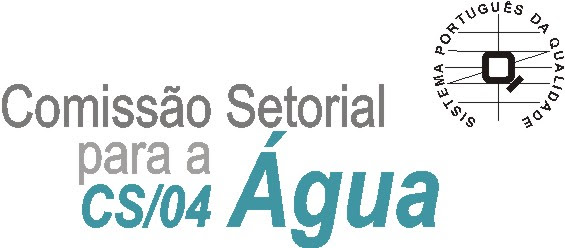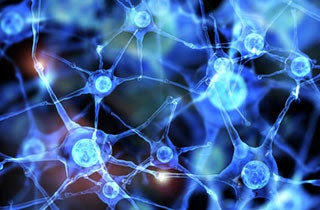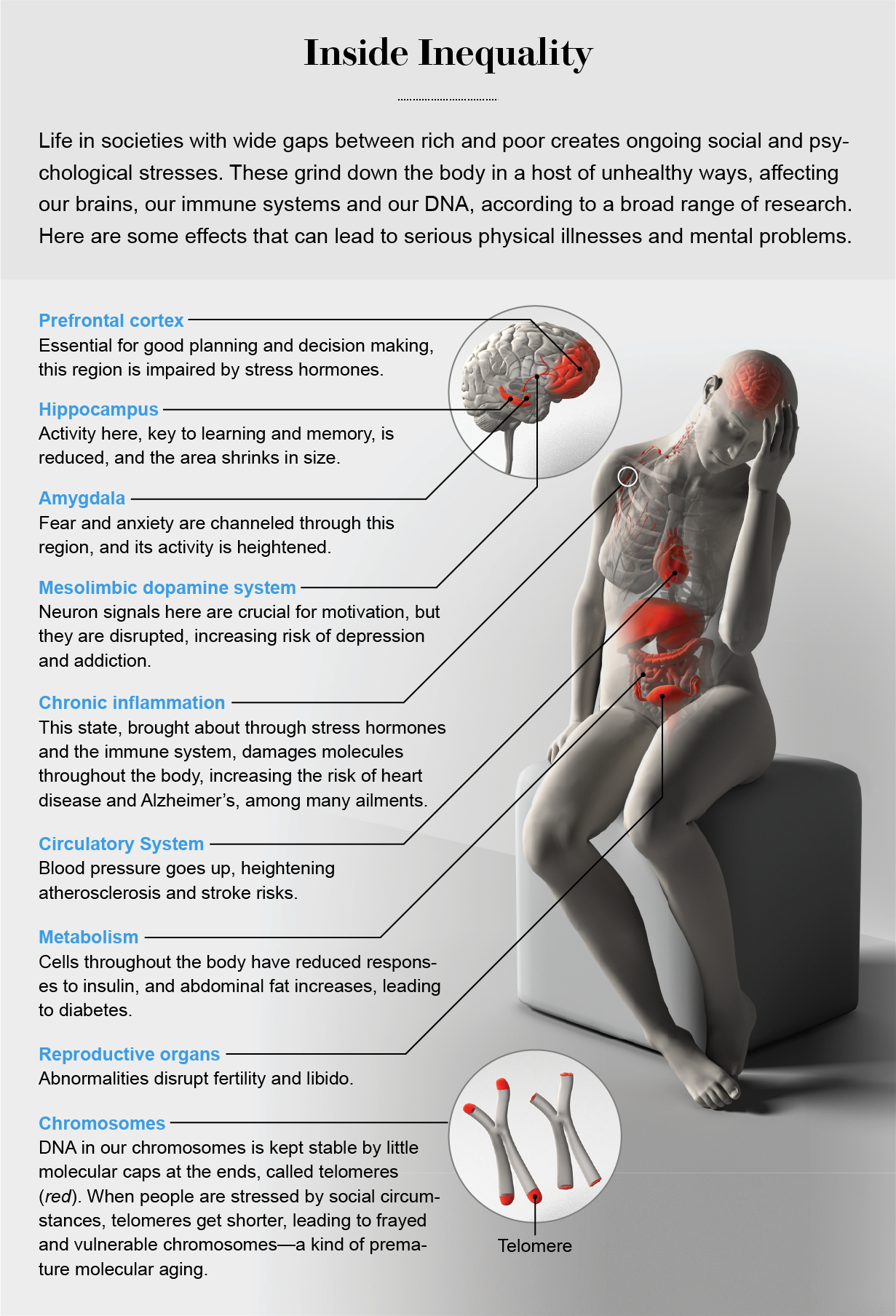Michael E. DeBakey (1908–2008)
Michael E. DeBakey, Surgeon, Scientist, Innovator, and Administrator (1908–2008) Hines, George L. MD Author Information Division of Vascular Surgery, NYU Winthrop Hospital, Mineola, New York The author has no conflicts of interest to report. I was recently giving a talk to third-year medical students about aortic dissections. During this talk, I discussed the contribution of Dr. Michael DeBakey to the field of aortic dissection. I assumed that every medical student would know about him, probably the preeminent cardiovascular surgeon of the 20th century. I was stunned when none of the ...mais »
LEGIONELLA
Workshop “Prevenção e Controlo de Legionella nos Sistemas de Água” Posted: 28 Feb 2019 10:30 AM PST Irá ter lugar no próximo dia 3 de abril de 2019, no Auditório Carlos Ribeiro – LNEG – Polo de Alfragide, o workshop “*Prevenção e Controlo de Legionella nos Sistemas de Água*“, promovida pelo Comissão Setorial para a Água (CS/04) e pelo Instituto Português da Qualidade (IPQ), dando continuidade a eventos anteriores da mesma génese. [image: Comissão Setorial para a Água (CS/04)] O workshop “*Prevenção e Controlo de Legionella nos Sistemas de Água*” tem como destinatários os profissionais... mais »
Global Hppiness 2019
Global Happiness and Well-Being Policy Report [image: report cover] The 2019 *Global Happiness and Well-Being Policy Report* is produced by the Global Happiness Council (GHC) and contains papers by expert working groups on happiness for good governance. This report provides evidence and policy recommendations on best practices to promote happiness and well-being. The 2019 *Global Happiness and Well-Being Policy Report* was presented at World Government Summit held in Dubai on February 10, 2019. - DOWNLOAD THE FULL REPORT (ENGLISH) - DOWNLOAD THE FULL REPORT (ARABIC) - Down... mais »
Human Development Report 2019
February 2019 Newsletter [image: Twitter] [image: Facebook] [image: LinkedIn] Measuring inequality with Inequality Adjusted Human Development Index (IHDI) By Admir Jahic, Manager, Online, Digital and HDR Production Measuring and analyzing inequalities in human development requires a multidimensional approach, beyond income. The IHDI reduces human development achievements by the inequality in the distribution of health, education, and income within countries. With perfect equality (e.g. in the case of life expectancy, if everyone lived to the same age) the HDI and the IHDI are ... mais »
Brain and Behavior
[image: Psychology] Brain and Behavior Seminar Series Neurobiologist and *Scientific American* author Robert Sapolsky examines the biology behind behavior, including chemical and structural factors of depression and schizophrenia as well as the neurobiology and evolution of traits like violence, aggression and empathy. Explore
Truth and Power...
Speaking truth to power 1. Audra J. Wolfe *March 4: Scientists, Students, and Society* *Jonathan Allen, Ed.* MIT Press, 2019. 200 pp. See all authors and affiliations Science 01 Mar 2019: Vol. 363, Issue 6430, pp. 935-936 DOI: 10.1126/science.aaw9045 - - Open in new tab Individuals gather in the offices of the MIT Science Action Coordinating Committee in 1969. PHOTO: FLORENCE HASELTINE/THE SMITHSONIAN ARCHIVES Before there was the March for Science, there was March 4. On that date 50 years ago, at more than 30 campuses across the United States, students and faculty d... mais »
Against Nuclear War
*Contribuição do AMICOR Enrique Barros:* Mobilize for peace 1. Jonathan A. King1,*, 2. Aron Bernstein2,† See all authors and affiliations Science 01 Mar 2019: Vol. 363, Issue 6430, pp. 907 DOI: 10.1126/science.aax1180 - Article - Figures & Data - Info & Metrics - eLetters - PDF Fifty years ago, on 4 March 1969, research and teaching at the Massachusetts Institute of Technology (MIT) came to a halt as students, faculty, and staff held a “research strike” for peace. The strike protested United States involvement in the Vietnam War and MIT's complicity in this ... mais »
Sience
China and the lingua Franca of science The word for ‘science’ in Chinese today is no longer ‘gézhì (格致),’ but the imported Japanese word ‘kēxué (科学)’. The switch reflects the “loss and shame” that followed the Chinese defeat in the Sino-Japanese War and heralds the attempt to forge a new Chinese identity, writes particle physicist Yangyang Cheng. Later, English became a language that begat both freedom and persecution for Chinese scientists. “Like the French syllables attached to polynomials and the German surnames associated with quantum mechanics, even when describing universal law... mais »
Neanderthal–Denisovan hybrid
FEATURES & OPINION The cave where human history was rewritten Denisova Cave in southern Siberia was once home to modern humans, Neanderthals and a mysterious group of extinct humans known as Denisovans. The cave yielded a single finger bone that revealed the Denisovans and a “one-in-a-million find” of a first-generation Neanderthal–Denisovan hybrid. Now, almost a decade after the discovery, scientists are gaining confidence that they will soon uncover more Denisovan remains from sites in China and beyond — if they haven’t already. Nature | 12 min read [image: image_alt_text]
Exercício/Esporte - Cardiologia
*ATUALIZAÇÃO DA DIRETRIZ EM CARDIOLOGIA DO ESPORTE E DO EXERCÍCIO DA SOCIEDADE BRASILEIRA DE CARDIOLOGIA E DA SOCIEDADE BRASILEIRA DE MEDICINA DO EXERCÍCIO E ESPORTE – 2019* O Departamento de Ergometria, Exercício, Cardiologia Nuclear e Reabilitação Cardiovascular da Sociedade Brasileira de Cardiologia, em parceria com o Grupo de Estudos de Cardiologia do Esporte e a Sociedade Brasileira de Cardiologia e da Sociedade Brasileira de Medicina do Exercício e Esporte, lança a Atualização da Diretriz em Cardiologia do Esporte e do Exercício, publicada recentemente na edição de março da AB... mais »
Periodic Table
150 years of the periodic table [image: Mendeleev stamp] Assembling atoms An element is defined by the number of protons it contains. Create an atom with more protons than ever before, and you’ve got yourself a brand new element. Each element comes in a variety of types, known as isotopes, distinguished by the number of neutrons in the nucleus. Changing the number of neutrons in an atom’s nucleus alters the delicate balance of forces that makes a nucleus stable or that causes it to decay quickly. Different isotopes of an element might have wildly different half-lives, the period of ...mais »
Where you live affects your health
Where you live affects your health - Harvard T.H. Chan School of Public HealthClick to print (Opens in new window) - In Boston’s Roxbury neighborhood, life expectancy is less than 60 years, while in the Back Bay—just a couple of miles away—it’s close to 90. That’s according to the most recent data from the U.S. Centers for Disease Control and Prevention’s “500 Cities” project, which includes health information from 500 cities across the country, by census tract. The data show how neighborhoods are faring in terms of health using a range of metrics, from obesity to smoking ... mais »
Inflating Universe
What Was It Like When The Universe Was Inflating? Cosmic inflation is what happened before, and set up, the Big Bang. Here’s what it’s like to live in an… Ethan Siegel in Starts With A Bang!8 min read
Sweets and Stress
Why Do We Crave Sweets When We're Stressed? A brain researcher explains our desire for chocolate and other carbs during tough times Achim Peters Although our brain accounts for just 2 percent of our body weight, the organ consumes half of our daily carbohydrate requirements—and glucose is its most important fuel. Under acute stress the brain requires some 12 percent more energy, leading many to reach for sugary snacks. Carbohydrates provide the body with the quickest source of energy. In fact, in cognitive tests subjects who were stressed performed poorly prior to eating. Their perfor... mais »
Biological Harm of Economic Inequality
How Economic Inequality Inflicts Real Biological Harm The growing gulf between rich and poor inflicts biological damage on bodies and brains - By Robert M. Sapolsky on November 1, 2018 *Promotion: Author Robert M. Sapolsky will be a speaker on Scientific American Travel’s cruise to the British Isles this August. His most recent article, made available here for a limited time, focuses on how the stress of poverty has physical consequences. One of four expert speakers, Dr. Sapolsky’s onboard lecture series will feature five thought-provoking seminars on the intersection of stress, ... mais »
Cholesterol Management
Editorial February 4, 2019 A New Personalized, Patient-Centric, and Cost-Conscious Guideline for Contemporary Cholesterol Management Eric Peterson, MD, MPH1,2; Philip Greenland, MD3,4 Author Affiliations Article Information JAMA. 2019;321(8):749-750. doi:10.1001/jama.2019.0045 related articles icon Related Articles - Elevated serum cholesterol is one of the world’s most common and modifiable risk factors for cardiovascular disease (CVD). In the 5 years since the release of the 2013 American Heart Association/American College of Cardiology (AHA/ACC) guideline for lipid manageme... mais »
Premonitions
The Psychiatrist Who Believed People Could Tell the FutureAfter a national disaster, a British doctor began collecting foreboding visions. Soon, they closed in on him. By Sam Knight John Barker recruited a group of people whose predictions were uncannily prescient. Then one foresaw Barker’s death. Illustration by Matthieu BourelBy Sam Knight John Barker recruited a group of people whose predictions were uncannily prescient. Then one foresaw Barker’s death. Illustration by Matthieu BourelFor many years, Kathleen Lorna Middleton lived at 69 Carlton Terrace, in the North London suburb of... mais »
Social aetiologies of type 2 diabetes.
*Ray Kelly*Verified ac count @IndigenousX FollowFollow @IndigenousX More ResEditorials Social aetiologies of type 2 diabetes arch all employees in Aboriginal health must read: Social aetiologies of type 2 diabetes. It shows how colonisation substantially increases the prevalence of diabetes. I dont have a link to a free full version but here is the abstract. https://www.bmj.com/content/361/bmj.k1795 …@NACCHOAustralia
Cicero
From: HISTORY MAGAZINE embodied. Bust from the Uffizi Gallery, FlorenceThe brutal beheading of Cicero, last defender of the Roman Republic In 43 B.C., Mark Antony murdered Cicero, famous for his unparalleled power of speech, and ushered in the beginning of the Roman Empiry. Cicero is remembered for his strong defense of the values of the Roman Republic and rejection of the tyranny he believed Julius Caesar, and then Mark Antony, LAWYER, STATESMAN, PHILOSOPHER The second-century A.D. historian Appian vividly captured the moment the Roman Republic truly died: When the great orator M... mais »
Forgetting
INFOGRAPHIC Infographic: Science behind forgetting Unless you have a photographic memory, you likely find it hard to remember everything you learn, even an hour or two after you learn it. Why? Research about how we remember and forget gives us a clue. 19th century psychologist Hermann Ebbinghaus created the “Forgetting Curve” after studying how quickly he learned, then forgot, a series of three-letter trigrams. Here’s what he discovered: Our brains are hardwired to recall important facts. The process that determines what you remember and what you forget makes recalling every single d... mais »
Mesothelioma
Mesothelioma Treatment *Standard Mesothelioma Treatment Options:* The most promising treatment options for mesothelioma are a combination of surgery, chemotherapy, and radiation therapy, with emerging treatment options utilized when appropriate. Mesothelioma is a type of cancer that is aggressive and difficult to treat, but there are still many options for treatment. These can effectively manage symptoms and extend a patient's survival and quality of life. Treatment choices vary greatly and include both traditional therapies like chemotherapy, as well as alternative medicine. There are...mais »
Dark Matter and Energy
Our entire cosmic history is theoretically well-understood, but only qualitatively. It’s by observationally confirming and revealing various stages in our Universe’s past that must have occurred, like when the first stars and galaxies formed, that we can truly come to understand our cosmos. The temporal origin of dark matter and dark energy have constraints, but an exact time-of-origin is unknown. (NICOLE RAGER FULLER / NATIONAL SCIENCE FOUNDATION)Ask Ethan: When Were Dark Matter And Dark Energy Created?They make up 95% of our Universe today, but they weren’t always so important. [i... mais »







